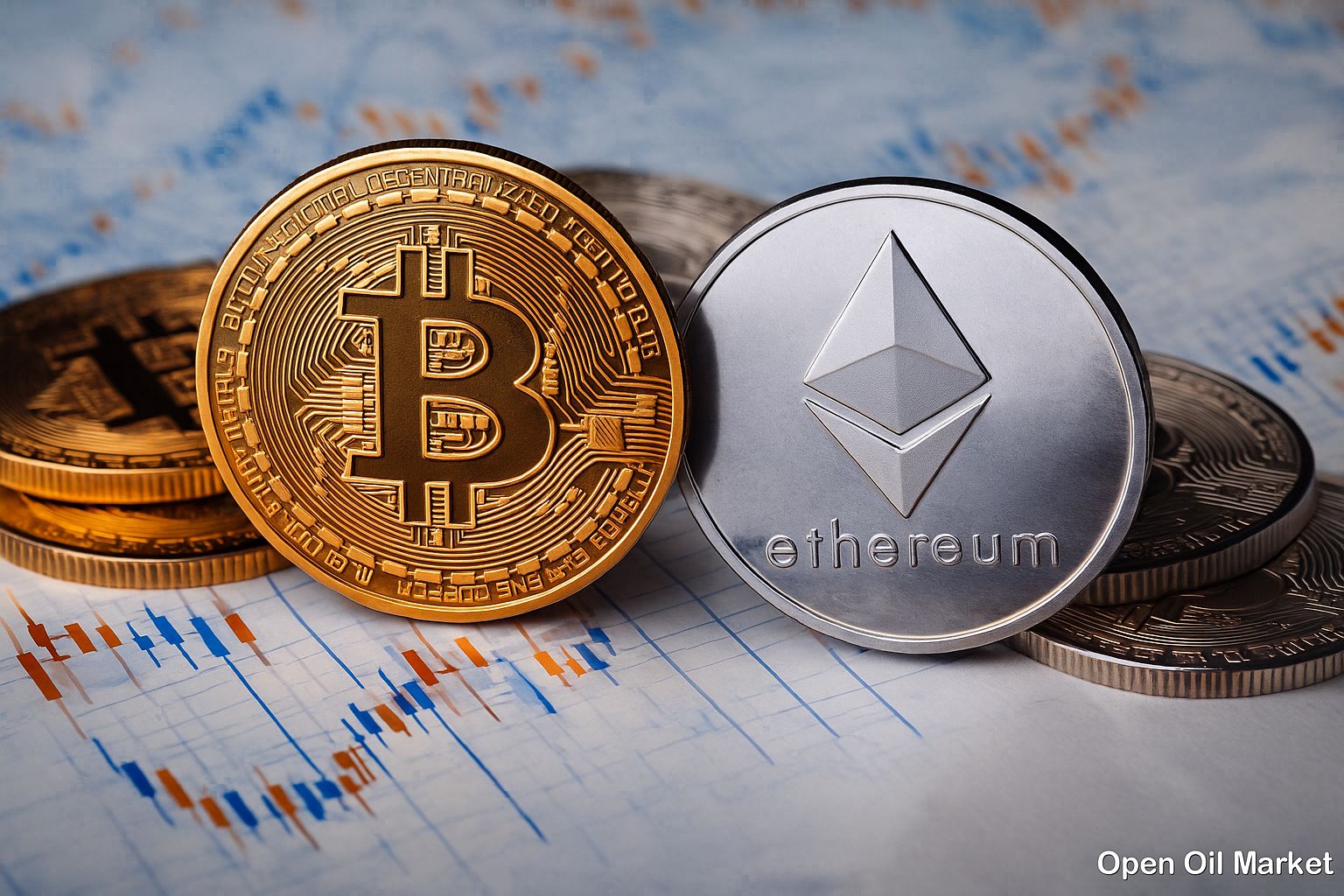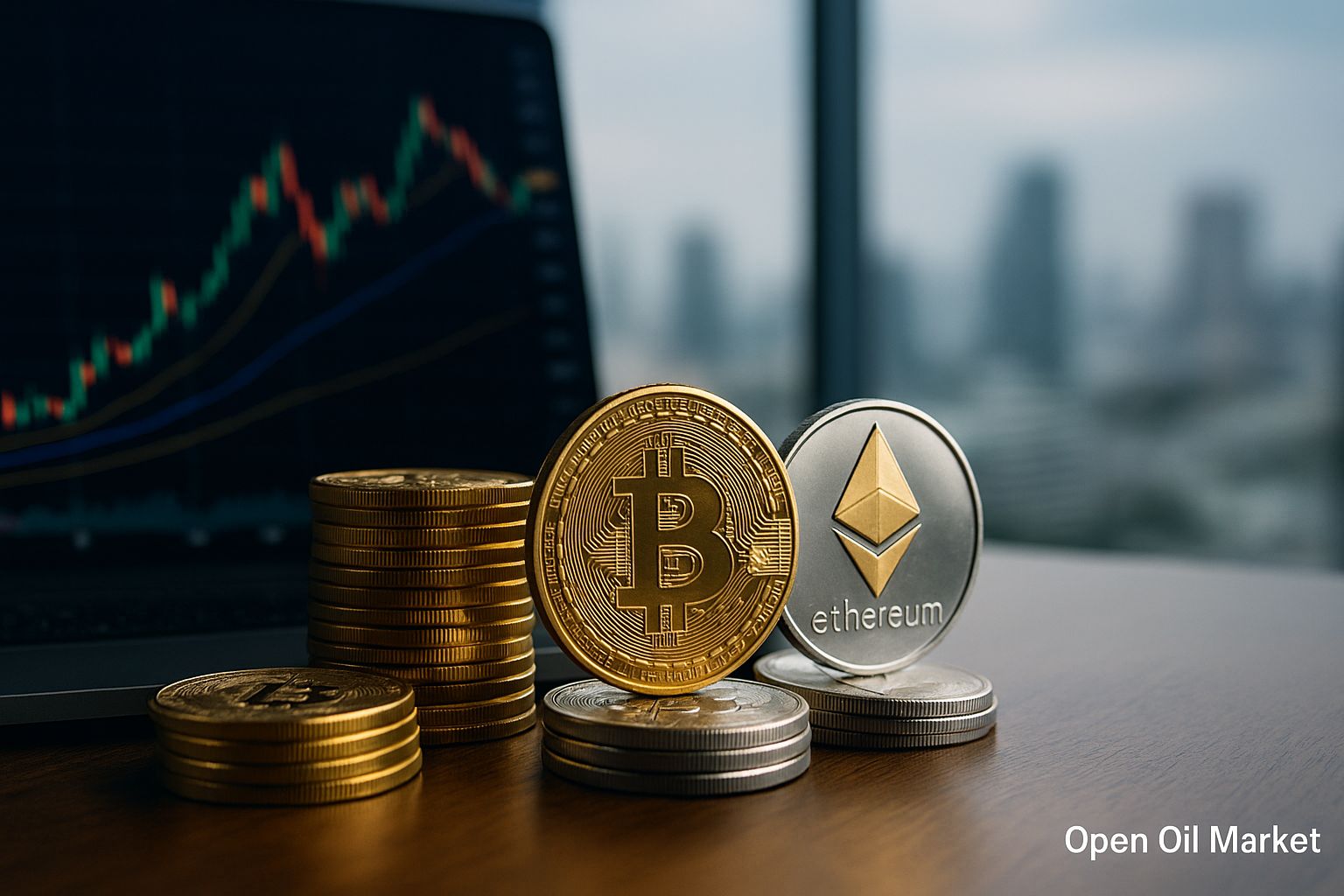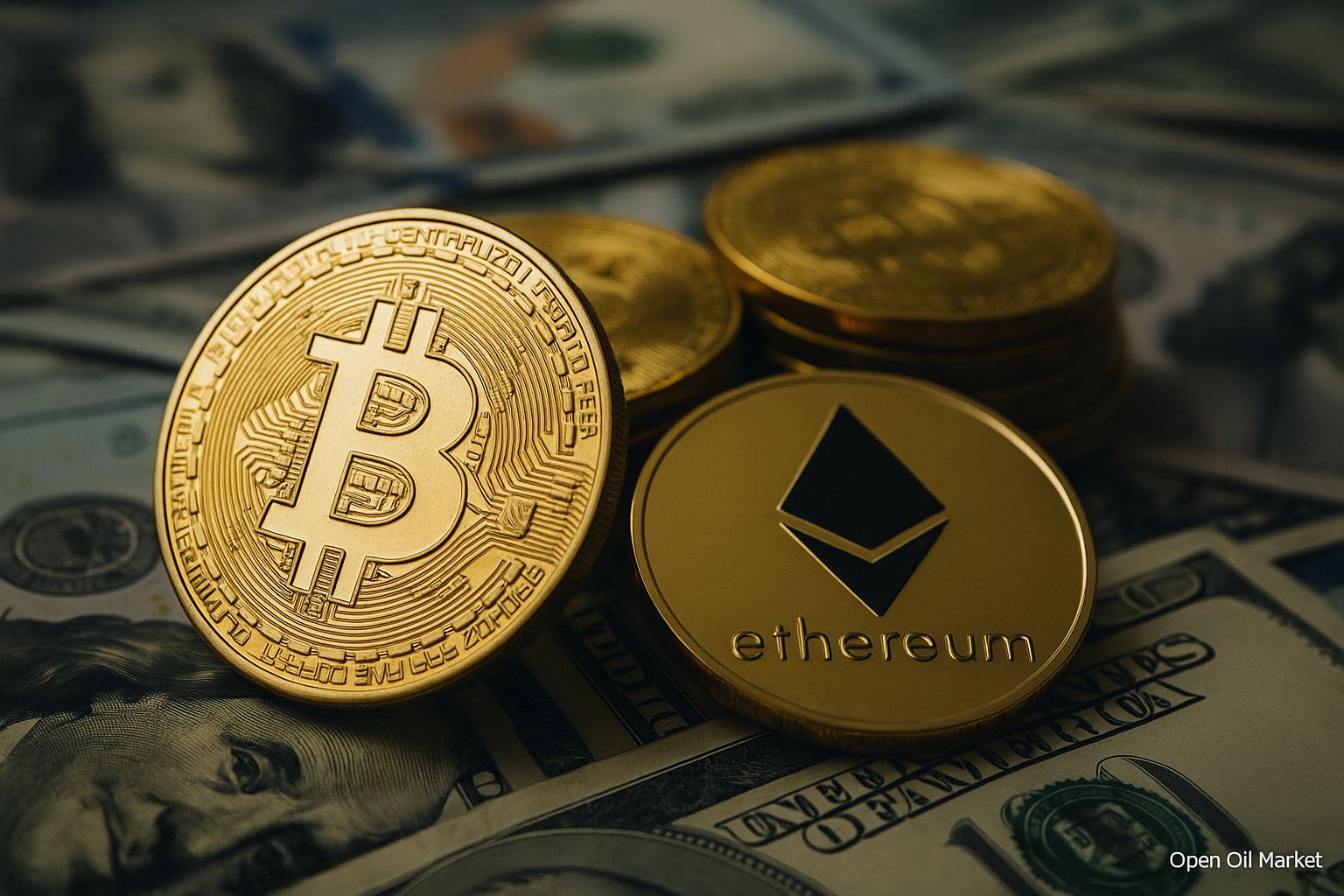
Current Cryptocurrency News as of November 17, 2025: Bitcoin Sustains Above $100,000, Ethereum Prepares for Upgrade, Altcoins Stabilize, and Institutional Investors Strengthen Positions. Full Market Overview and Analysis of the Top 10 Coins.
As of the morning of November 17, 2025, the global cryptocurrency market exhibits cautious stabilization following a recent correction. Bitcoin has managed to regain its footing and is trading once again near the psychologically significant mark of $100,000, supporting an overall cryptocurrency market capitalization of around $3.4 trillion. Ethereum holds its current level amidst anticipation of a major network upgrade, while altcoin dynamics remain mixed. Investors continue to be attentive to macroeconomic signals: the Fear and Greed Index stands in the "fear" zone (around 30 points), reflecting cautious sentiment. In this context, the primary focus is on whether Bitcoin can maintain its position in the six-figure range and whether sentiment improvement will propel a new altcoin rally.
Bitcoin: Holding the Key Level
The flagship cryptocurrency, Bitcoin (BTC), experienced an impressive rise to a new all-time high (around $125,000) in October, followed by an anticipated correction. Last week, pressure on BTC peaked: the price briefly fell to around $95,000, piercing the psychologically significant barrier of $100,000 for the first time since May. However, by the second half of November, Bitcoin has stabilized and is currently consolidating in the range of $100,000–105,000, attempting to stay above the key level. BTC's market dominance is around 55–58%, underscoring its role as a primary indicator of sentiment in cryptocurrencies. Analysts note that a factor contributing to the recent decline was a global shift of investors away from risky assets, following signals from the U.S. Federal Reserve about maintaining high interest rates. Nevertheless, large holders and institutional investors continue to exhibit confidence, with many viewing the correction as an opportunity to increase positions in "digital gold." Market attention is on whether Bitcoin can retain six-figure prices and resume an upward trend by the end of the year or if consolidation will deepen following the rally.
Ethereum: Anticipating Network Upgrade
The second-largest cryptocurrency by market capitalization, Ethereum (ETH), is moving in line with overall market trends, maintaining a price of around $3,300 after a pullback from its autumn peak. In October, ETH surged to around $3,900, but following Bitcoin's trajectory, it declined by approximately 15–20%, dipping below $3,100 in early November (its lowest level in recent months). Currently, Ethereum has bounced back to around $3,300, remaining below its all-time high of 2021 (around $4,800). Despite the correction, interest in Ethereum is bolstered by anticipation of significant events: a major network upgrade aimed at enhancing scalability and reducing fees is slated for early December. Additionally, the crypto industry expects approval for the first spot ETF on Ethereum in the U.S. by year-end—this move could attract new institutional capital into ETH. The fundamental metrics for the Ethereum network remain strong: the decentralized finance (DeFi) and NFT ecosystems continue to develop, and the transition to Proof-of-Stake and associated upgrades have solidified Ethereum's position as a foundational "digital infrastructure" of the crypto market. If the upgrade is successful and the market context is favorable, Ethereum has the potential to recover lost ground and approach new heights.
Altcoins: Mixed Market Dynamics
The altcoin segment in mid-November is demonstrating heterogeneous trends. Many of the largest alternative coins followed Bitcoin downward during the correction, but the situation is now stabilizing: some altcoins are attempting to recoup losses, while others continue to stagnate. For instance, Ripple (XRP), after a rapid surge in the fall (the token briefly surpassed $3 for the first time since 2018 following Ripple's victory in court against the SEC), has corrected and is currently holding around $2.4–2.5. Despite the pullback, XRP remains among the leaders due to improved legal clarity regarding the token's status and interest from financial companies. Binance Coin (BNB), after hitting a record near $950, has retreated to around $900 but maintains its position in the top five by market capitalization, reflecting its wide usage within the ecosystem of the largest cryptocurrency exchange. High-cap platform tokens, such as Solana (SOL) and Cardano (ADA), also experienced a correction (SOL fell from around $200 to $150, ADA from around $1 to $0.50), but they remain in the top ten due to active communities and ongoing technology development. Meanwhile, speculative niche tokens have also dropped significantly as enthusiasm surrounding meme coins and AI-based projects has diminished. Bitcoin's dominance index, which previously exceeded 60%, has slightly decreased, indicating a cautious rotation of capital into select altcoins. Nevertheless, the overall market sentiment remains cautious: investors favor large, established assets, and increased volatility within the altcoin segment underscores the need for selectivity.
Institutional Investors and New Products
Large investors and financial organizations continue to play a significant role in the cryptocurrency market, despite recent price fluctuations. The year 2025 has marked historical steps in integrating cryptocurrencies into the traditional financial system: in the U.S., the first spot Bitcoin ETFs began trading (initiatives from leading firms such as BlackRock attracted billions of dollars in just a few weeks), with similar funds for Ethereum and other assets in preparation. Furthermore, index ETFs covering baskets of several top coins are entering the market, facilitating diversification for large investors. The ongoing submission of applications for new crypto funds— including ETFs tied to XRP and Solana—signals an intent from institutional investors to expand their presence in digital assets. Corporations are also getting involved: some public companies and hedge funds have taken advantage of lower prices to increase their cryptocurrency reserves, viewing this as a strategic investment. Analysts emphasize that the influx of professional capital is one of the key drivers in the market, providing increased liquidity and trust.
Regulation: U.S., Europe, and Global Trends
The regulatory environment surrounding cryptocurrencies in 2025 is significantly improving, fostering increased trust from investors and businesses. In the United States, authorities are demonstrating a more lenient approach to the industry: Congress is advancing legislation that establishes rules for cryptocurrency exchanges and token issuers, while the new SEC leadership has softened its rhetoric and withdrawn several lawsuits against major platforms. A notable event was the pardon granted in late October to Binance founder Changpeng Zhao (CZ)—an action the Trump administration presented as a signal of compromise and readiness for dialogue with the crypto sector. Moreover, high-level discussions are underway regarding initiatives to integrate cryptocurrencies into traditional financial instruments: in particular, plans have been announced to permit the use of digital assets in 401(k) retirement savings plans, opening access to cryptocurrencies for millions of retail investors.
In Europe, by year-end, the Markets in Crypto-Assets (MiCA) regulation will come into full effect, introducing uniform rules for the crypto industry across EU countries. Dozens of crypto companies have already obtained licenses under the new requirements, ensuring transparency in operations, stringent stablecoin reserve standards, and consumer rights protection. European regulators continue to monitor risks: additional measures for oversight of global stablecoins and DeFi platforms are being discussed to prevent potential threats to financial stability. Concurrently, progressive jurisdictions in Asia, such as Hong Kong and Singapore, are actively implementing cryptocurrency-friendly regulatory regimes, seeking to attract blockchain businesses and become global crypto hubs. Furthermore, leaders of the world's largest economies discussed the need to develop global approaches to oversight of digital assets during the G20 summit this weekend, indicating that the topic of cryptocurrencies has reached the international agenda. Collectively, these trends point towards the gradual transformation of cryptocurrencies from a "wild" financial field into a regulated sector of the economy, which in the long term opens the door for the influx of new capital and market participants.
Top 10 Most Popular Cryptocurrencies Today
- Bitcoin (BTC) — ~$101,000, the largest cryptocurrency (around 55% of total capitalization). BTC serves as the main barometer for the entire crypto market and retains its status as "digital gold" for long-term investors. Despite the correction, Bitcoin has significantly increased since the beginning of the year, with interest fueled by both institutional demand and limited supply (21 million coins).
- Ethereum (ETH) — ~$3,300, the second-largest digital asset (around 12–13% of the market). The primary platform for smart contracts, underpinning thousands of decentralized applications (DeFi, NFT marketplaces, etc.). Ethereum's transition to Proof-of-Stake, its deflationary emission model, and the upcoming network upgrade bolster confidence in ETH, even though its price currently remains below all-time highs.
- Tether (USDT) — ~$1.00, the largest stablecoin with a market capitalization of around $160 billion. USDT is pegged to the U.S. dollar at a 1:1 ratio and is used as the primary "liquidity park" on cryptocurrency exchanges. Stablecoins like Tether empower traders and investors to swiftly move funds between exchanges and avoid volatility, remaining a cornerstone of the market.
- Binance Coin (BNB) — ~$920, the proprietary token of the Binance ecosystem (in the top 5 by capitalization). BNB is used to pay fees on the Binance exchange and gain access to additional services (e.g., participating in new token launches on Binance Launchpad). Despite regulatory challenges concerning Binance's operations in several countries, the coin maintains high rankings due to its broad utility and community support.
- USD Coin (USDC) — ~$1.00, the second-largest stablecoin (around $75 billion in capitalization). Issued by a consortium of companies led by Circle, fully backed by reserves in fiat currency held in bank accounts. USDC is trusted by both retail and institutional market participants, frequently used for transactions and savings in trade strategies.
- XRP (Ripple) — ~$2.4, a token used for cross-border payments within the RippleNet network. Thanks to positive court rulings in 2025, XRP has regained investor confidence, briefly climbing above $3—its highest since 2018. Following the correction, XRP remains among the leaders: market capitalization exceeds $100 billion, with banks and fintech companies continuing to explore Ripple's solutions for accelerating international transfers.
- Solana (SOL) — ~$155, a high-performance blockchain platform focused on scalable decentralized applications. SOL has seen notable growth in 2025 (though it has retreated from its recent peak of ~$200) due to ecosystem expansion: the Solana network has attracted projects in the DeFi, gaming, and NFT sectors. Institutional interest and the launch of new products (including a potential ETF for SOL) support the token's ongoing strong performance.
- Cardano (ADA) — ~$0.55, a blockchain platform for smart contracts, known for its academic approach to development. Despite its price being significantly below record levels, ADA remains in the top ten largest assets due to its substantial market capitalization and community support.
- Dogecoin (DOGE) — ~$0.17, the most well-known meme cryptocurrency created as a joke. DOGE remains among the leaders thanks to its cult community and periodic attention from celebrities, but it continues to be an extremely volatile asset (capitalization of around $20 billion).
- TRON (TRX) — ~$0.31, a token from the Tron blockchain platform, which focuses on creating infrastructure for entertainment and digital content. TRX is in demand for transactions within the Tron network and for issuing stablecoins (USDT and other stablecoins actively circulate on Tron). In 2025, Tron consolidated its position, as high network throughput and low fees led to increased usage, allowing TRX to remain in the top ten by capitalization.
Outlook and Forecasts
As 2026 approaches, the cryptocurrency market is in a state of equilibrium between past successes and remaining risks. On one hand, the impressive growth of Bitcoin and several altcoins in 2025 has confirmed a long-term upward trend: even after the recent correction, most leading assets are trading significantly above early-year levels, attracting new investors. The strengthening presence of institutional investors, the emergence of regulated investment products, and gradually clarifying the legal status of cryptocurrencies have created a more mature and resilient ecosystem. This lays a solid foundation for further market expansion: optimists believe that after the consolidation phase, a new price surge is possible. Predictions are being made that in 2026, Bitcoin could surpass the $150–200,000 mark, and Ethereum could reach new all-time highs, provided the macroeconomic environment is favorable and fresh growth drivers emerge.
On the other hand, short-term risks for the cryptocurrency market remain. A strict monetary policy, delays in technological upgrades, or security incidents (such as large-scale hacks) could temporarily undermine investor confidence. Cautious experts also do not rule out a prolonged pause in price growth if the market does not receive new catalysts. Therefore, it is crucial for participants to adhere to risk management principles—diversifying assets and focusing on a long-term strategy to navigate potential fluctuations confidently. Nevertheless, the cryptocurrency industry enters 2026 more mature and resilient, instilling moderate optimism regarding its further development.




